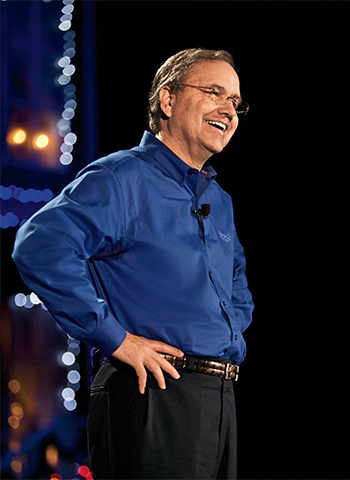
The same year that gave us the Cuban missile crisis, the Second Vatican Council, the admission of James Meredith into the University of Mississippi and the newly independent countries of Algeria, Jamaica and Trinidad and Tobago also gave us Kohl’s, Kmart (now part of Sears), Target and Walmart, all of which got their start in 1962.
Today those chains certainly have their share of stores dotting the US and world map: Counting all Sears Holding Corp. stores, the four enterprises are represented by 16,486 retail establishments — 11,000 in 27 countries from Walmart alone.
Their corporate and distribution facilities occupy their fair share of space too. Since 2004, Site Selection has tracked more than 100 corporate facility projects from the companies (counting all from Sears), most of them logistics facilities. Again Walmart dominates the tally, with 48 of those projects — the company operates 172 distribution centers in the US alone.
So it was with no small amount of interest that some 20,000 logistics and supply chain professionals gathered in Atlanta last week for the concurrent MODEX, Supply Chain & Transportation USA and Georgia Logistics Summit events, bookended by speeches from Walmart leaders and punctuated throughout by the exigencies of retail in a dynamic era.
Woven throughout the 150 sessions and hundreds of exhibitors were several themes: the unstoppable influence of e-commerce; global shipping and trade; automation. Encompassing all three of those was the first company attendees saw when they walked into the cavernous exhibit hall: Amazon. Stocked with bright, smiling employees shipped in fresh from Seattle (where headquarters and operations staff growth is so dramatic they joke about stacking desks vertically), the display area also showed off the gee-whiz movements of the company’s newly acquired Kiva robot division, which company leaders have said will save Amazon hundreds of millions through warehouse efficiencies.
In a keynote onstage interview session with Mitch MacDonald, group editorial director, president and CEO of AGiLE Business Media, former Walmart president and CEO and current Walmart board member Lee Scott didn’t hold any grudges against the Seattle-based giant.
“Walmart will be relevant for decade and decades,” said Scott, “but Amazon … the worst thing is that guy who runs it [Jeff Bezos] is the nicest guy. It’s just hard to like your competitor.”
He also observed how all retailers — no matter how high-flying and how virtual — have to honor and respect the logistics bone structure of their organizations.
“It doesn’t matter if Amazon has 10 million items on their website,” he said, “if I order that one thing and it doesn’t get here when it’s supposed to.”
Evolution and Ecosystems
The undeniable forces of e-commerce have been loosed, and they’re not going back in the box — unless it’s the box on the next UPS shipment.
“Anything that could be digitized was digitized,” Scott observed. “Seventy percent of movies are sold the first two weeks they’re out. Music is bad, books are difficult. So moving those things out of the stores fundamentally changes your company.”
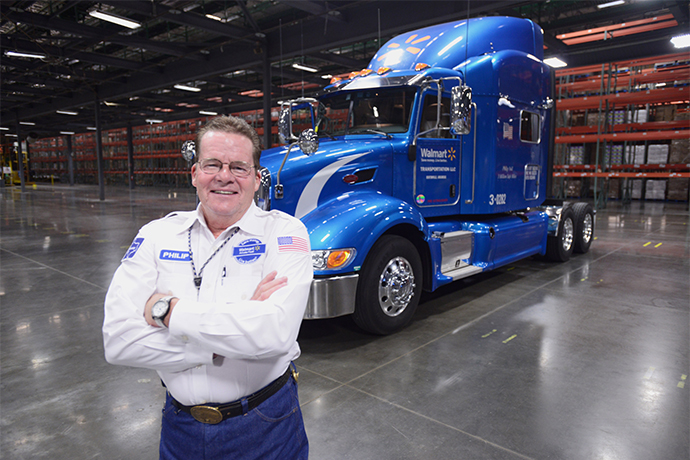
But some fundamentals are still in place, if not intensifying.
“For people who have money, more and more of their purchases will occur on the Internet,” said Scott, before unleashing a statement that MacDonald asked him to repeat for emphasis:
“In this world, if you have change in your pocket today, you have more money than 2 billion people who live on this earth,” said Scott.
“So what happens with many of us at our income levels,” he continued to a suddenly quieter room, “is we get to thinking everyone can shop the way we can shop. But if you’re living paycheck to paycheck and you have to pay a little bit more, the truth is you have to give something up. There’s a sophistication level also required to order online that not everybody can embrace.”
The move online will continue, he said, but but it will not erase the bricks-and-mortar crowd. One has only to look at the fast-growing footprints of Dollar General and Dollar Tree, and the still-growing gap between the nation’s poorest and richest citizens. Nevertheless, said Scott, e-commerce “puts some pressure on Walmart. Look at history — it’s difficult for the incumbent to change and be a leader in whatever’s new.”
Target serves its 1,924 stores in the US and Canada from 37 distribution centers in the US and three in Canada. In his own talk focused on imports, Steve Carter, director global logistics planning and strategy for Target, said Target brings in about 320,000 TEUs a year from more than 30 countries. Target too has benefited, especially abroad, from grabbing control of trucking and warehouses and eliminating inflated middleman costs. But many of the challenges come from how goods move once they’re stateside, including e-commerce.
“We have e-fulfillment centers in Tucson, Arizona, and Woodberry, Minnesota,” he said. “We’re not planning to expand anymore, but leverage our assets.” That includes looking at the possibility of repurposing some of its general distribution center space. “Amazon is clearly the biggest and best at what they are doing,” he said, “but they are not closer to the customer, though they’re building it out incredibly rapidly. How do we ship from our stores, and back to our stores?”
The company recently launched the option for customers to buy online and pick up merchandise in stores, an effort Carter called “incredibly successful for us.” A related effort is the CityTarget, an urban store about one-third to one-half the size of a standard Target store which the company has launched in a few select markets. It comes at the same time Walmart has announced it will open 270 to 300 small stores, and just opened its first Walmart To Go convenience store.
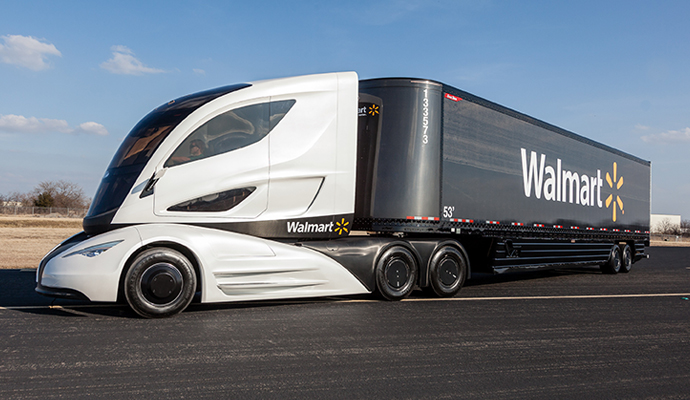
“The roots of Walmart were rural, and we started in the suburbs,” said Carter. So it’s only natural that the city is the next arena for both. “Everyone is trying to get into the cities, and sales per square foot have to be so high to justify those costs,” he says. But it’s the last frontier in a sense.
“We pretty much saturated the market,” said Carter. “For us to grow, we need to find the areas with smaller stores. That is going to drive a lot of supply chain [activity] — smaller POs, and more frequent deliveries, which is against everthing we try to do in supply chain. And there are the challenges of serving the stores. In Chicago, at the former Carson Pirie Scott store, we had to be careful because of historic ashes on the floor from the Great Chicago Fire. There are unique challenges to cities, but we think there is payback because our guests are there. We have to figure out how to do an urban ecosystem.”
Size and Sustainability
Ecosystems have been on Walmart’s collective mind too. In his onstage interview, Lee Scott reflected on his own rise from the warehouse docks to boardroom, and on the logistics roots of a major Walmart strategy decision. When Sam Walton opened the first stores in Rogers, Siloam Springs and Mountain Home, Ark., said Scott, the only trucking company in Northwest Arkansas was Jones Trucking, and Walton had a hard time getting direct deliveries to his stores from Jones’ terminal network, such as it was.
“That’s why Walmart developed its own distribution,” said Scott. “Sam would carry merchandise in his station wagon, and then started his own truck fleet. It started because he had no choice.”
By the late 1970s, David Glass, eventually promoted to CEO, was starting up the company’s first mechanized distribution center in Searcy, Ark. “That’s when Walmart first started thinking there’s something about this that gives us an advantage. David gets the credit for that. I was assistant director of trucking. My goal was to be assistant director of warehousing, because warehousing made more money than trucking. JB Hunt proved me wrong.”
In his own speech closing the Georgia Logistics Summit two days later, Kevin Jones, vice president of inbound transportation at Walmart said the company’s private fleet now numbers 5,954 tractors, with Walmart drivers covering 700 million miles a year carrying 4.5 million loads annually.
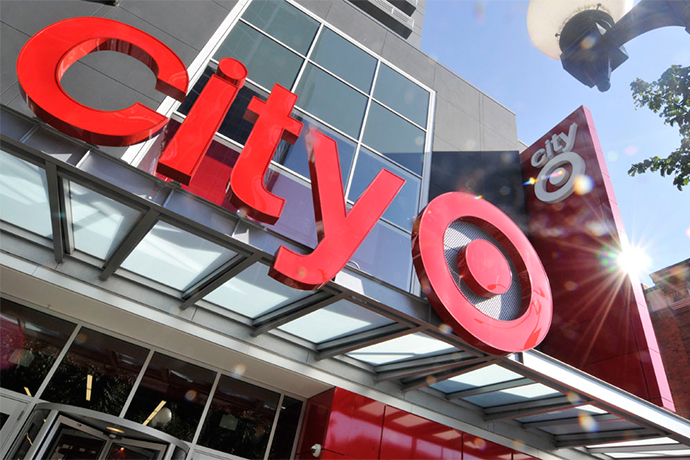
“We consider our fleet to be a competitive advantage for us,” Jones said, “particularly given things like the weather we just went through, because we don’t have to rely as much on third-party carriers for our success.”
It’s a long way from Sam Walton’s station wagon to the company’s latest logistics innovation: the mostly-composite Wave concept vehicle, about 4,000 pounds lighter than a standard truck, and with zero emissions. That vehicle’s development and other moves at Walmart have come because of the company’s overt sustainability mission — a cause that didn’t necessarily go over well when it was first pursued.
“It was very controversial,” Scott said of the company’s ambitious plan to reduce emissions and eliminate waste. The company met its 20-percent emissions reduction goal last year, one year earlier than its goal. The original plan came at a time when the company was under attack by unions and other groups, and when the growing Walmart, because of its size, made an easier public relations target.
“When you are large, every negative you can have because of size accrues to you,” said Scott. “Everything you do that’s good you have to work to make sure your own people see.”
He recalled seeing a cable news scroll that listed Canada’s call for elections, American military casualties in Iraq and the fact that a Walmart store manager had offended an African-American. Scott noted his company at the time employed 2.1 million people. “Do you know a city of 2.1 million people that doesn’t have a jail?” he said. “You can take the 50 worst and write the worst story in the world about Walmart. Or you can take the 200 best.”
Scott resolved to focus on how the company’s size could help it do good in the world.
“I used to think everybody who disagreed with us hated us and wanted us out of business,” he said. Then Katrina happened, and he learned of an employee bulldozing into a Walmart pharmacy in order to dispense urgently needed medicine. Employees swam across levees and ditches to open stores, and Walmart trucks lined up on two-lane roads outside New Orleans to distribute food, water and boots well before FEMA or any other organization arrived on the scene.
“I asked the question, ‘Why can’t we be that Walmart all the time?’ ” said Scott. “ ‘Why are we spending so much of our time being defensive? What can we do because we’re so big that nobody else can do?’ ” The company supported reauthorization of the Voting Rights Act, among other things. Though it’s gone neutral this year on a potential minimum wage hike, Scott supported such a move in 2005. In the meantime, he led the charge to set high sustainability goals.
I said, ‘We can stand up for the environment.’ ” That drew the ire of some conservatives who told him to stop giving credence to “the global warming people.” But the push continued. “Sam Walton didn’t actually believe you ought to optimize everything,” said Scott. “He just believed you should improve every day. We set these big goals you could hardly ever reach, but it allowed us to get off our duff.”
Scott also had to endure the shame of the high-level environmental experts his team called in for counsel — several did so only under the condition that Walmart not release their names, so as not to upset their socially conscious colleagues in the environmental movement: “We met in a basement of a restaurant instead of in our office,” Scott recalled of one meeting with a globally recognized ecology thinker.
Scott has a standard list of 10 things he learned at Walmart, and one of them is this: “The most helpful voice you hear may be the one that’s the most critical. Once we decided they didn’t hate us, we could talk to Sister Barbara about women — she didn’t want us to go away, she wanted us to be a better company. People were willing to embrace us if we did the right thing.”
Still In the Driver’s Seat
Those right things include more promotion of women in management, and a program that offers a job within 12 months of honorable discharge to any US military veteran — it’s led to 34,000 veteran hires thus far.
The latest right thing — and a project arguably driven by logistics as much as patriotism — is Walmart’s commitment to buy an additional $250 billion in products that support American manufacturing. The program already has led to multiple project announcements from textile, toy and other companies. The Boston Consulting Group estimates the initiative will add 1 million jobs in the United States. Its latest offshoot occurred earlier this month when the US Conference of Mayors, Walmart and the Walmart Foundation launched the Walmart U.S. Manufacturing Innovation Fund. Eligible non-profit organizations can apply for grants of $100,000 or more, funded by the Walmart Foundation, to help create solutions to challenges many companies face with on-shoring and growing U.S. manufacturing.
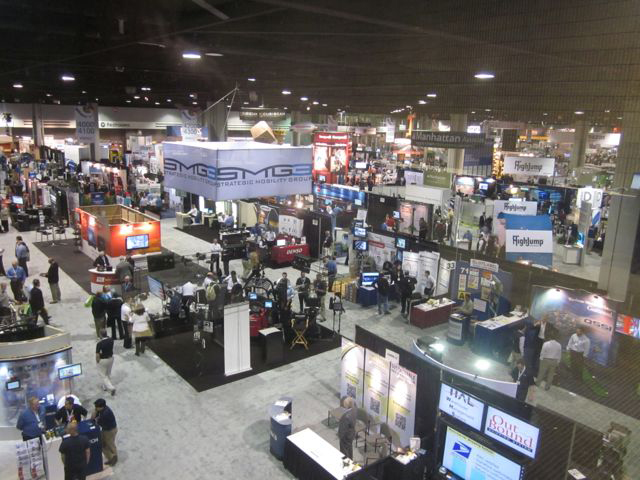
The first year of the initiative will focus on innovation in textiles manufacturing and common manufacturing processes that apply to a broad range of consumer goods, including small motor manufacturing and tooling for injection molding. Anticipated participating organizations include research and academic institutions, think tanks and other non-profit entities focused on innovations in manufacturing.
At the same time, Jones said in his talk, it’s no longer a matter of domestic distribution. Examples of goods moving all directions include the growing sales of Walmart’s private-label Oak Leaf wines in Japan and China; a Canadian snack food popular in Japan growing suddenly popular in Mexico as well; a newly exported US cheese to Mexico and US frozen pizza to Chile; and Walmart’s purchase of entire apple crops in Washington, for shipment to all corners of the world.
“The interesting thing about this,” said Jones, “is that buying that full crop and increasing domestic production has helped us waste less, because we buy the whole crop, and what’s culled we turn into apple juice and other products. The supply chain has led the decision, and has led efficiency into the network.” But that’s nothing new at Walmart.
“Sam Walton realized many years ago that having our own drivers and trucks was important,” said Jones, and that awareness is alive and well in new president and CEO Doug McMillon. “On his first day on the job he hopped in a truck and rode with the drivers, visiting stores. That demonstrates an absolute commitment to the supply chain.
